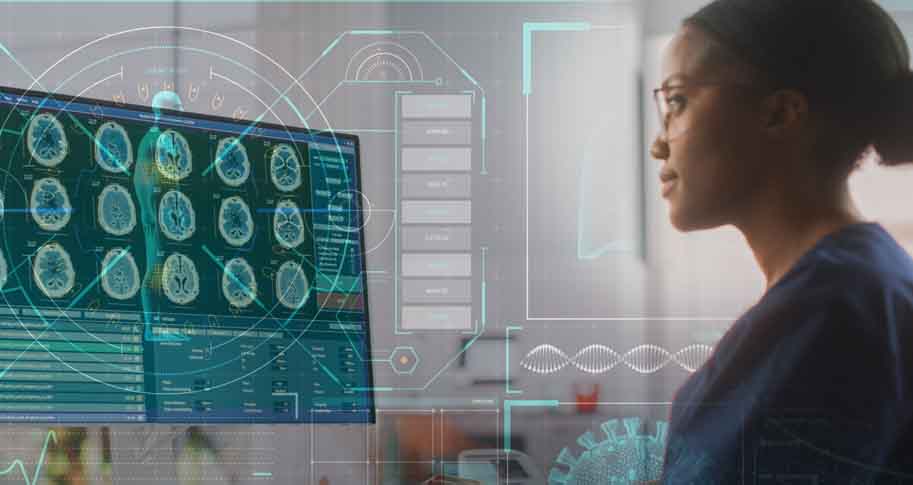
We have all had a bad day or week (or several weeks) at work: the project that never ends, a particularly difficult client, not having the materials you need when you need them, or teammates who never quite seem to pull their weight. Burnout goes beyond that, though. Workplace burnout is described as a state of chronic physical, emotional, and mental exhaustion caused by excessive and prolonged stressors in the work environment. Employees, from entry-level workers to senior executives, experience feelings of cynicism, detachment, and a reduced sense of accomplishment. Burnout affects individuals across industries and professions, but it has become quite prevalent in the healthcare profession, specifically in nursing.
Implementing effective preventative measures and a supportive work environment is crucial in mitigating the effects of workplace burnout. For instance, having adequate and available resources can make up the difference between nurse burnout and increased productivity. While it’s frustrating for any of us when we don’t receive a package on time or are waiting on approval, when nurses lack resources, the stakes are much higher: lower healthcare outcomes.
In “An experience sampling analysis of the impact of video monitoring technology and in-person sitters on nurse burnout: The moderating effect of nurse commitment and mediating effect of emotional labor,” a team of scholars and healthcare professionals uncover how hospitals’ use of video monitoring technology impacts nurses’ stress and well-being. The research team consisted of Donald Kluemper (Texas Tech University),Jiaqing Sun (London School of Economics and Political Science), Young Eun Lee (Florida State University), Sandy J. Wayne (University of Illinois at Chicago), Emily Anderson (Providence St. Joseph Health), Crystal M. Billings (Providence Swedish), Joel Koopman (Texas A&M University), and Walton College Professor of Management Christopher C. Rosen (University of Arkansas).
This method of observation reduces the need for one-to-one, in-person sitters, and, therefore, reduces the need for nurses to use limited, intangible resources, such as their time, physical and emotional energy, and attention. Once finite resources are depleted, stress and burnout ensue. And once burnout takes root, it becomes hard to cut back and manage, much less root out.
The Impact of VMT on Nurses
According to Conservation of Resources theory (COR), supplies and equipment are tangible resources, while energy and emotion are valued, intangible resources. Having the right tangible resources has a notable and noticeable effect in many workplaces, but especially in hospitals. If nurses has available tangible resources, they need not waste intangible resources to compensate, reducing likelihood of burnout.
One such tangible resource that can become a difference maker for nurses is video monitoring technology. Video monitoring technology (VMT) allows nurses to observe patients remotely through cameras, speakers, and trained technicians.
More specifically, VMT is regularly placed in hospital rooms to observe numerous patients’ medical needs at a time, as well as prevent falls and reduce the amount of people in a room. VMT became particularly common during the COVID-19 pandemic. According to prior research, hospitals used VMT during the pandemic to minimize in-person contact, increase cost savings, and reduce disease transmissions to health care workers. VMT use proved beneficial amid the pandemic, and it has since been used more regularly.
When patients require heavy attention and observation, nurses must draw upon personal, intangible resources to manage the patient’s needs. This loss of time, energy, and attention can create a cycle, increasing in momentum with each future loss and leaving nurses more vulnerable and less capable of completing tasks.
Protect Resources at All Costs
Nurses have many responsibilities throughout a single workday: caring for several patients, communicating with doctors, administering medicine, and checking vital signs. While this study was conducted to find the impact on nurses’ stress and well-being, prior research has provided evidence that VMT reduces patient falls and nurses’ day-to-day work responsibilities, as well as increases hospitals’ financial savings and staffing effectiveness.
Consider the consequences of a nurse losing a couple of hours of work every week to observe a patient in person, despite the capability to meet emergencies promptly through VMT observations. Like a teacher who loses control over their students because of a lack of adequate rest the night before, the nurse might fall behind on additional duties and become stressed by the time loss.
Overworked employees in understaffed industries might deplete their intangible resources to make up for the lack of tangible resources. This emotional labor results in surface acting, which requires employees to “fake” or suppress negative emotions at work. This "faking” is notable in the nursing profession and, unfortunately, produces higher turnover rates. According to previous research, 54% of the sampled nurses suffer moderate burnout, increasing organizational turnover by 12%. Additionally, the researchers found a 10% increase in emotional exhaustion and a 19% increase in cynicism after one year. Burnout adds up.
Contrastingly, hospitals’ implementation of VMT will reduce patient burden and care responsibilities. Therefore, the research predicts that nurses will experience a decrease in surface acting.
More VMT, Fewer Sitters
Ensuring accessible healthcare requires a dedicated and well-trained nurse workforce of adequate size, capable of delivering top-notch services. These results also demonstrate the importance of nurses who have high levels of dedication and career commitment, which translates into the development of career goals and the willingness to exert effort to reach those career goals. Nurses with high levels of career commitment will experience more pronounced effects when utilizing either resource-draining one-on-one sitters or cost-effective VMT. Therefore, resource allocation of VMT will produce a wide range of positive impacts on nurses and their workplaces.
While the researchers already knew the benefits of VMT regarding patient safety and staffing efficiency, they found a significant impact on nurses’ stress levels and well-being through the study. VMT reduces nurses’ rates of surface acting and emotional exhaustion because intangible resources no longer need to be spent on one-to-one in-person sitters. The technology, a tangible resource gain, allows nurses to avoid a loss cycle and meet ongoing stress demands without burnout.
“Before we had the (VMT) technology, we wouldn’t have had enough people left to take care of the patients on the floor. If I’d had to have all the people sitting with one-to-ones, it would have been a nightmare,” said a nursing campus coordinator to the researchers.
Healthcare burnout, specifically in the nursing profession, is not only real but prevalent. Whether from a lack of adequate funds, resources, or staff, nurses are continuously experiencing higher rates of emotional exhaustion and burnout, resulting in increasing turnover rates. Technology, particularly VMT, plays a principal role in relieving burnout in the healthcare industry. Future research should be done to measure how far the benefits of increasing technology in professional industries can reach. Adequate availability of technology can mean diminishing emotional exhaustion, surface acting, burnout, and high turnover rates altogether. Having available resources promotes workplace efficiency and a supportive environment, which will benefit any profession.






